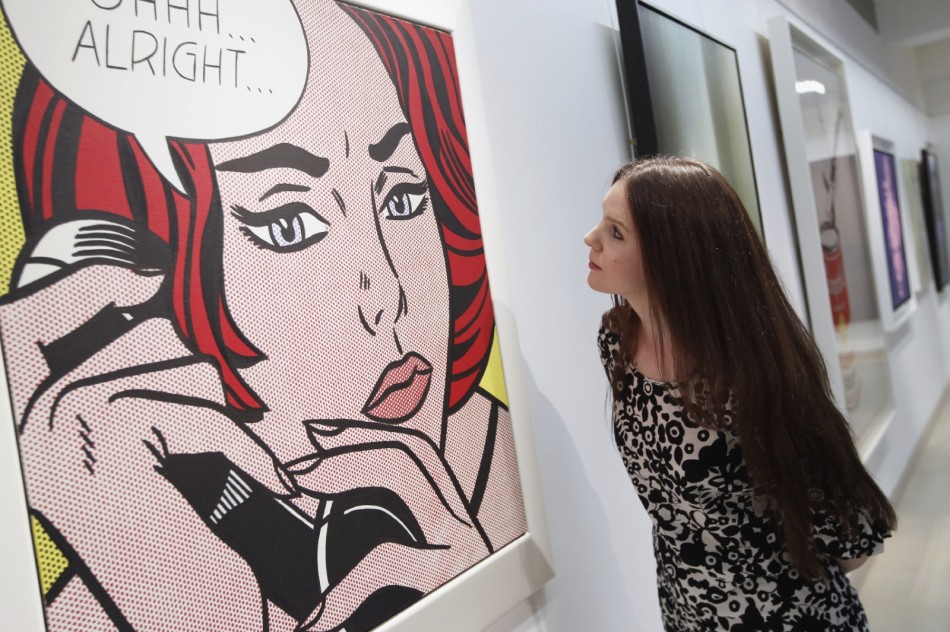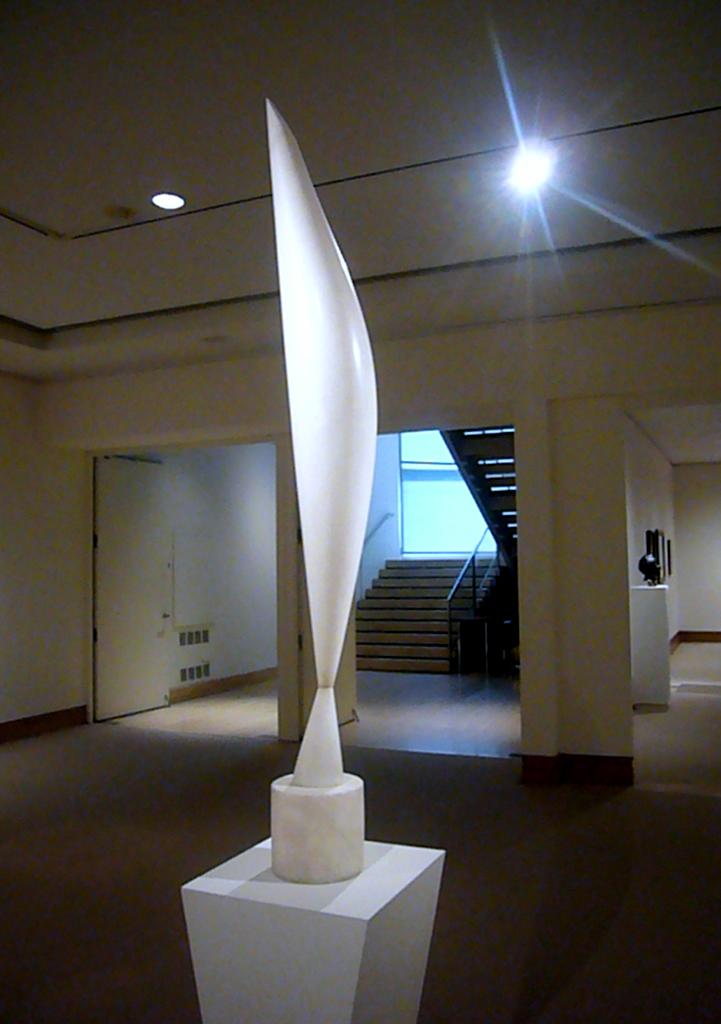
Woman examining a Roy Lichtenstein at auction
Art for the Few? Or Art for The Many? Year-End Reflections
If media coverage at the end of a year can seem like a redux of sameness — big money, big deals — consider in arts media the equity gap between the few stories that seem to get told hundreds or thousands of times, versus the thousands of stories that don’t get told a single time.
(An inner voice says, “Don’t now try to argue for fairness.” Ok.)
Here, though, is a collision of the weird. On Nov. 23 the New York Times reported that “Art Makes You Smart.” The report showed a causal relationship between schoolchildren getting a free trip to the Crystal Bridges Museum in Bentonville, AK, and showing improved critical-thinking afterwards.
Some year and a half earlier, in April 2012, the National Center for Education Statistics had released its own report about the state of arts education in the country. They found that only three or four percent — not a typo — of public elementary schools offer arts education of any kind at all.
Meanwhile, depending on what else you read in arts media, you might have noticed late responses to Coco Fusco’s February essay in The Brooklyn Rail on the risky financial investment of costly MFAs. While Fusco says that what once justified the degree’s cost was “preparation for teaching” (presumably not now in public schools), Jed Perl‘s latest rant in The New Republic opines that art’s wacko prices at auction demonstrate that “art is another hope to be abandoned, along with the hope that your children might do better than you’ve done.”
It might take searching to find the real dollars in the rather sad story of Cornelius Gurlitt whose name in November netted tens of thousands of Google search results. Gurlitt is the 80-year-old Munich recluse, the son of a wartime art dealer and possible looter of art, Hildebrand Gurlitt. From his father he had 1406 pictures by the likes of Picasso, Chagall, Paul Klee and so on, which Bavarian authorities raided and seized from his apartment in February 2012. The story of Gurlitt Junior has nothing to do with windfall profits; rather, he would nightly open a suitcase to peruse his secret works. He told Der Spiegel, in his only interview to date, that he considered them the loves of his life.
Five days before that interview, on November 12th, Christie’s achieved a $142.4 million auction result for the Francis Bacon triptych, “Three Studies of Lucian Freud.” The New Yorker’s Peter Schjeldahl said the transaction lacked Gurlitt’s “gloss of spiritual refinement.” Everyone breathed heavily, “Who bought it? Was it really the sister of the emir of Qatar, Sheikha Al-Mayassa bint Hamad bin Khalifa al-Thani?” Apparently not. But she still is spending $1 billion a year on art.
Forbes said there were 1342 US billionaires in 2013. That compares to fewer than 25 percent of Americans who have enough savings for six months of expenses, and another 27 percent who have no savings at all. Meanwhile, when Jacoby Ellsbury signed a new seven-year contract with the Yankees for $153 million, he beat the earlier contract record of $142 million — the same sum Chicago is going to pay to build an Obama library.
Finally, we seem to be ending the year with renewed attention, not on Cornelius Gurlitt or Francis Bacon and Lucian Freud, but on what will happen to the Detroit Institute of Art’s art collections now that the city has been cleared to declare bankruptcy.
Does great art belong to the public, or to the ages, or to those few with mind-bending net worths?
Among my leisure activities during this year was a very enjoyable reading of The Goldfinch, in which Donna Tartt sets the instigating action at the Met around a bomb and the titular picture of the 1654 masterpiece by Carel Fabritius.
Here at last I circle back to my point — the equity gap in arts education. When I spent two weeks in New York in October, I went to the Met, of course. My husband and I tromped through Greek red-figure vases, through the new Rockefeller Oceanic galleries, upstairs to 20th-century abstraction en route to Balthus. We paused to watch a docent lead a group of schoolchildren through a vivid tutorial in front of Brancusi’s Bird in Space. “Describe the bird,” she urged. The children eagerly chimed in as to its lack of webbed feet, indeed its lack of avian symmetry, yet immediate recognizability. “What makes it abstract?” she asked, finally. You could see so many small people practically tumble over one another to explain the gesture they intuitively, immediately understood: its arc, secular and sacred in one swoop. It was moving in the extreme to witness.
Art and critical thinking, yes. Art and enchantment, for certain. Without both, or without either, art and its encircling vocation of criticism risk irrelevance.
A bigger problem is the culture of prohibitions we seem to be engendering against creativity.
It is difficult to see the point of this work some days. But perhaps one could say that similar problems attended creative work a century ago, when this partial transcript of a trial, Constantin Brancusi v. United States of America, found arts experts having to argue for why the sculpture’s form might have suggested the rounded breast of a bird, and whether or not the witness would have shot at a bird like this one when out hunting. Lest we imagine that culture now redound only as perks to the super rich, we can segue to Carlos Castaneda: “We either make ourselves miserable, or we make ourselves strong. The amount of work is the same.”

